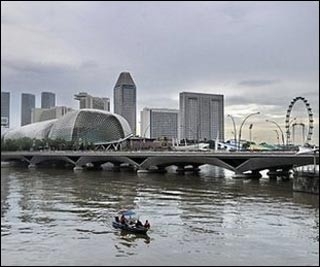
Singapore private property new sales volume up 17%
PropNex estimates an overall 5–8% growth for private residential properties, while different types of properties will see varying growth rates.
Although the private property’s price index recorded a new high of 194.8, the 2.0% growth is the lowest percentage increase per quarter since the financial crisis of 2008.
“The impact of the 30 August 2010 cooling measures on prices is evident,” observes PropNex CEO Mr Mohamed Ismail. “Prices in the Core Central, Rest of Central and Outside Central regions all grew marginally by 2.2%, 1.9% and 2.1% respectively, which is lower growth Q-on-Q across the board.”
However, while the price levels seem to have stabilized due to the cooling measures, the total volume of sales hit 8,511, just two transactions lower than 3Q10 and the highest 4Q volume of sales by far since 2006.
Although Mr Ismail notes that most of the sales came from new sales. While the number of private property sub-sales and resales dropped 19% and 11% respectively, the new sales volume jumped up 17%. This continued interest in private property, particularly for new projects, is probably what prompted the further round of cooling measures on 13 January 2011, at least in part.
The cooling measures, which include a lower Loan-To-Value ratio cap of 60% and an extended minimum holding period for imposition of Sellers’ Stamp Duty (SSD) to four years, with the SSD increased to up to 16%, targets many investors and forces all home buyers to adopt a mid-to-long term view for their property purchase/investment.
For 2011, Mr Ismail forecasts an overall 5–8% growth for private residential properties, but says that the different types of properties will see varying growth rates.
“Mass market condominiums in the Outside Central areas should see a modest growth of 3–5%,” he opines, “buoyed mainly by the more matured estates, as newer developments will have to be launched at prices that are sensitive to the cooler market sentiment, according to a PropNex report.
“There may be investors who do not want to be tied down for 4 years, as per the revised minimum holding period for imposition of Seller’s Stamp Duty, and would have shifted their interest from the Core Central to Rest of Central regions. The growth for Core Central will probably be negligible at about 1–2%, while the Rest of Central could enjoy up to 10% growth in price levels.
“Finally, Mr Ismail concludes, “landed properties will always be in demand due to Singapore’s land scarcity. Furthermore, investors of landed properties tend to be wealthier and adopt a longer term view of investment, so we can expect to see a 10–12% price growth for landed properties.”
























 Advertise
Advertise






